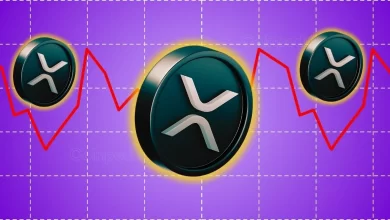Newly discovered evidence suggests that David Schwartz, Ripple's CTO, may have had the initial blueprints for the XRP Ledger back in 1988.
Schwartz's patent bears a striking resemblance to the validation process in today's XRP Ledger.
Ripple continues to gain traction in the global financial system, with many banks using the network for payment transfers.
Recent findings have cast doubt on the established history of the XRP Ledger, suggesting that David Schwartz, Ripple’s Chief Technology Officer, may have had the initial blueprints for this network way back in 1988. This revelation challenges the widely accepted notion that the XRP Ledger was founded in 2011 by Schwartz, Jed McCaleb, and Arthur Britto.
Discovering Evidence
EDO Farina, a prominent advocate for XRP, recently set the crypto world abuzz with a Twitter revelation. He shared a patent document from 1988 that had been filed by none other than David Schwartz.
Read More: Ripple’s Proper Party and Gary Gensler’s Hearing: A Pivotal Week for the Crypto Market
What Does This Imply?
Schwartz’s patent, submitted in August 1988, details a distributed network of computers for data processing, with each node managing a portion of the data. While it doesn’t explicitly mention blockchain or the XRP Ledger, the striking resemblance between the patent’s description and the validation process in today’s XRP Ledger is undeniable.
Crypto influencer Max Keiser swiped at the news, tweeting, “XRP is CENTRALIZED s*** as you can plainly see from the patent.” This tweet resonates with a portion of the crypto community that has often criticized XRP for being too centralized, which is a claim Ripple has consistently refuted.
Meanwhile, Ripple Races Ahead!
While this debate rages on, Ripple seems unimpacted. The network has already gained considerable traction in the global financial system. Colombia’s previous administration has even considered using Ripple for its national land registry, and numerous banks worldwide employ the network for speedy, cost-effective payment transfers.
In his tweet, Farina also touched upon the potential “downfall” of Ethereum, suggesting that Stellar and XRP Ledger “are ready to absorb all the real-world utility.” This ominous warning comes when Ethereum faces scalability issues, making room for other networks like the XRP Ledger to emerge.
Will it emerge though? Well, that’s a discussion for another day!






